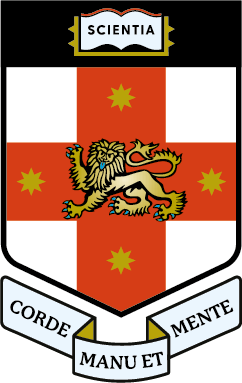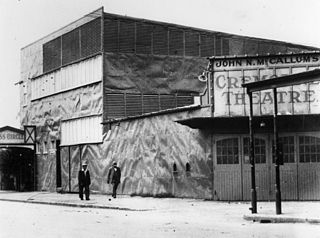Related Research Articles

The University of New South Wales (UNSW), also known as UNSW Sydney, is a public research university based in Sydney, New South Wales, Australia. It is one of the founding members of Group of Eight, a coalition of Australian research-intensive universities. It is ranked 19th in the world in the 2024 QS World University Rankings.

David Keith Williamson is an Australian playwright. He has also written screenplays and teleplays.

The National Library of Australia (NLA), formerly the Commonwealth National Library and Commonwealth Parliament Library, is the largest reference library in Australia, responsible under the terms of the National Library Act 1960 for "maintaining and developing a national collection of library material, including a comprehensive collection of library material relating to Australia and the Australian people", thus functioning as a national library. It is located in Parkes, Canberra, ACT.
The Australian Ballet (TAB) is the largest classical ballet company in Australia. It was founded by J. C. Williamson Theatres Ltd and the Australian Elizabethan Theatre Trust in 1962, with the English-born dancer, teacher, repetiteur and director Dame Peggy van Praagh as founding artistic director. Today, it is recognised as one of the world's major international ballet companies and performs upwards of 150 performances a year.

Australian Dance Theatre (ADT), known as Meryl Tankard Australian Dance Theatre from 1993 to 1999, is a contemporary dance company based in Adelaide, South Australia, established in 1965 by Elizabeth Cameron Dalman. The ADT was the first modern dance company in Australia, and drew on the techniques of Martha Graham for its inspiration.

Theatre of Australia refers to the history of the live performing arts in Australia: performed, written or produced by Australians.
John Henry Romeril is an Australian playwright and teacher. He has written around 60 plays for theatre, film, radio, and television, and is known for his 1975 play The Floating World.
Robyn Archer, AO, CdOAL is an Australian singer, writer, stage director, artistic director, and public advocate of the arts, in Australia and internationally.
Garry Stewart is an Australian dancer and choreographer. He was the longest-serving artistic director of the Australian Dance Theatre, taking over from Meryl Tankard in 1999 and finishing his term at the end of 2021. He is renowned for his unusual, post-modern interpretations of classical ballets.

Toni Lamond AM, is an Australian vaudevillian, cabaret performer, singer, actress, dancer, comedian, writer and television and radio personality/presenter. She has had a successful career spanning some 80 years, both locally and internationally, including in the United Kingdom and United States

Jill Perryman is an Australian multi-award winning retired stage and screen actress and singer, with a career that spanned 70 years. Perryman is from a family of show business performers; her sister was actress Diana Perryman and her son is media personality, radio and TV presenter and musician Tod Johnston.
AustLit: The Australian Literature Resource, is the national bio-bibliographical database of Australian Literature. It is an internet-based, non-profit collaboration between researchers and librarians from Australian universities, housed at The University of Queensland (UQ). The AustLit database comprises a comprehensive bio-bibliographical record of Australian storytelling and print cultures with over 1 million individual 'work' records, and over 75 discrete research projects.

The Cremorne Theatre was a theatre in South Brisbane, Brisbane, Queensland, Australia that operated, with interruptions, from 1911 to 1954. Although nothing remains of it today, the general location retains its cultural significance from the first half of the twentieth century as a theatre precinct, thanks to the nearby construction of Queensland Performing Arts Centre (QPAC) in 1985. Its name lives on in the new Cremorne Theatre, one of the venues within QPAC.

Sally McKenzie also credited as Sally MacKenzie, is an Australian actress, director, playwright and screenwriter. She graduated from Australia's National Institute of Dramatic Art in 1977. She later earned a Master of Fine Arts from the Queensland University of Technology.
The Indecent Exposure of Anthony East is a 1968 play by David Williamson.
The Cake Man is a 1975 play by Aboriginal Australian writer Bob Merritt, notable for being the first play written by an Indigenous Australian person to be published, televised and to tour out of Australia. A telemovie was made of a 1977 performance of the play. The Aboriginal Theatre Company was formed by Bob Merritt and Brian Syron especially to produce the play for a tour to the United States in 1982.

David Pledger is an Australian artist and director.
Nindethana Theatre was Australia's first Aboriginal theatre company, founded in Melbourne in 1971, with its last performance in Adelaide in 1974.
The Australasian Association for Theatre, Drama and Performance Studies (ADSA), formerly the Australian Drama Studies Association, is an academic association promoting the study of theatre in New Zealand and Australia.
The New Theatre in Melbourne, formerly Melbourne Workers' Theatre Group, was one of a number of branches of Australia's New Theatre movement established in the 1930s. This was a radical left theatrical movement which staged performances with a political message. The theatre group existed from 1936 until 2000.
References
- 1 2 3 "AusStage: Gateway to the Australian Performing Arts". Gateways (60). National Library of Australia. December 2002. ISSN 1039-3498.
- 1 2 3 4 "Project History". AusStage: The Australian Live Performance Database. Retrieved 11 August 2019.
- ↑ Bollen, Jonathan; Harvey, Neal; Holledge, Julie; McGillivray, Glen (April 2009). "AusStage: E-Research in the Performing Arts". Australasian Drama Studies (54). Retrieved 13 August 2019.
- 1 2 Foster, Chris (12 April 2001). "AusStage National Performing Arts Database". The Wolanski Foundation Project. The Wolanski Foundation. Retrieved 12 August 2019.
- ↑ "LE210100007 — Flinders University - AusStage Phase 7: The international breakthrough". Grants Data Portal. Australian Research Council. 2021. Retrieved 30 August 2022.
- ↑ "Performing Arts Heritage Network". Australian Museums and Galleries Association. Retrieved 12 August 2019.
- 1 2 3 "Partners and staff". AusStage. Retrieved 12 August 2019.
- ↑ Daniels, Yole (13 September 2022). "The twists and turns of AusStage". National Library of Australia. Retrieved 24 January 2024.
- ↑ "Australian Live Performance Database (AusStage)". Australian Memory of the World. Retrieved 24 January 2024.
- ↑ "The J.C. Williamson Distributed Collection". Australian Memory of the World. Retrieved 24 January 2024.
- ↑ Bollen, Jonathan; Harvey, Neal; Holledge, Julie; McGillivray, Glen (April 2009). "AusStage: e-Research in the Performing Arts". Australasian Drama Studies. 54: 178–194. Retrieved 11 August 2019.
- 1 2 3 "The world's largest directory of Australian stage performances, AusStage, is under threat". Daily Review. 15 January 2018. Retrieved 11 August 2019.
- ↑ "Browse". AusStage: The Australian Live Performance Database. Retrieved 12 August 2019.
- ↑ "Search". AusStage: The Australian Live Performance Database. Retrieved 12 August 2019.
- 1 2 "Australian Live Performance Database (AusStage)". UNESCO Australian Memory of the World Program. Australian National Committee for UNESCO. 2021.
- ↑ Clayton, Jane (15 January 2018). "World's largest record of Australian performing arts in funding jeopardy". InDaily. Retrieved 13 August 2019.